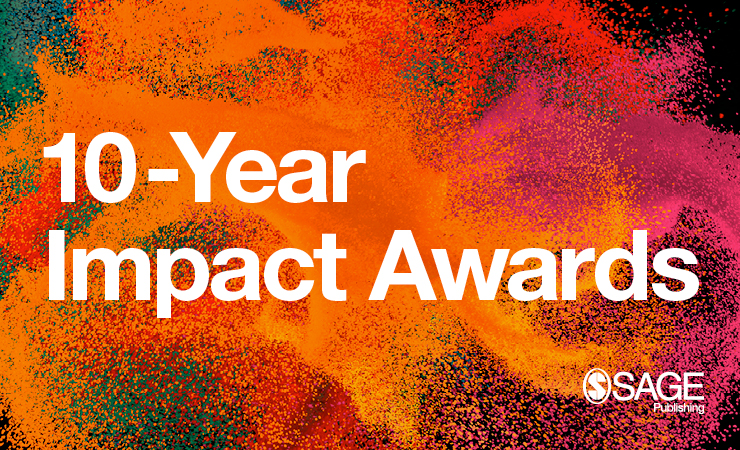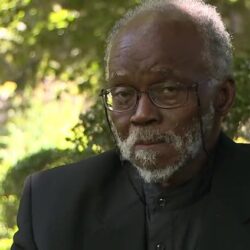Editor’s Note: This resource will evolve over time. If you’ve seen impact-related language on a grant application and would like to share, please email Gus.Wachbrit@sagepub.com or Michael.Todd@sagepub.com.
Unique conditions often lead to unique research. Today is tough, yes, but today is as good a day as any to get started on that research project, or perhaps to envision and draft a proposal for a new one. In fact, according to this study from the United States’ National Science Foundation, the timing and relevance of a project may lead to higher likelihood of funding. With the coronavirus crisis, there are a number of timely and relevant opportunities that researchers might hope to take advantage of. Although funding is often granted on the basis of a number of factors: imaginativeness of project, newness of project, worth of project, and so forth– most institutions or agencies offering funding to the social sciences are looking for research projects that will produce impact, i.e., will have a positive, measured effect on society. Impactful projects may influence policy, may lead to follow-up studies, etc. Although most funders are looking for projects that will produce impact (which is why you need to think about such a thing when drafting a proposal), “impact” is an admittedly vague term.
A Vague Term
Impact is a vague term. Some institutions/agencies will have their own metrics or scoring system for determining the potential impact of a proposal, others will have stated goals or mission statements on their website: maybe this agency seeks impact in the form of local community, perhaps this next agency looks at impact on global poverty, etc. To aid any social scientists who are interested in figuring out just what “impact” can mean, Social Science Space is compiling a list of several funders and their respective positions on what “impactful” research is (i.e. on which sorts of research projects will receive funding). Anyone who is drafting a proposal or envisioning a new project may find use in comparing or contrasting the sorts of stated missions that each funder provides.
Impact and Funding
Impact and funding are intimately linked. Here is a list of private & public funders with their respective positions on “impactful research.”
1) National Science Foundation (NSF) – A study was recently published relating to awards & impact for NSF-funded projects. The study had several interesting findings. Click here to read the full study:
“Insight 1: Impact metrics do not appear to depend on award size. Some smaller awards had impact metrics greater than many of the largest awards.
Insight 2: Impact metrics vary by audience size. Broad reports of interest to large audiences typically had higher impact metrics than more narrowly focused reports.
Insight 3: The timing and resilience of topics appears to affect impact metrics. Reports released when policy interest in the topic was high typically have greater impact metrics. Reports on topics of ongoing policy interest also appeared to have higher impact metrics.”
The study provides another ten insights and provides readers with a long list of recommendations on how to seize funding opportunities. Click here to read more, HIGHLY recommended.
2) National Institute of Health: “After discussing an application, members of the review group privately vote a numerical impact/priority score from 1 to 9, where 1 is best. The final overall impact score is determined by calculating the average of all the members’ impact scores, and multiplying the average by 10. Impact scores run from 10 to 90, where 10 is best. NLM uses the overall Impact Score as the primary basis for award decisions on all grant types, along with innovation and potential impact.” To learn more about the assigning of “impact scores,” click here for the criteria.
3) Gates Foundation: “We work closely with program teams to select opportunities, ensuring every investment aligns with the foundation’s programmatic strategies and charitable goals. In addition to program strategy alignment, we consider several additional factors when determining the appropriate investment tool to fund an opportunity.
- Our impact: We invest in organizations or projects that benefit the world’s poorest and are often overlooked by traditional investors. That’s why we support projects that would not happen or would have lower social impact without our involvement.
- Leverage of external capital: Our goal is to serve as a catalyst for great ideas that can expand opportunity. At a minimum, we aim to have investments matched by other investors ( a 1:1 leverage). Ideally, our investments would mobilize other capital at an even greater ratio.
- Scalable and sustainable solutions: We look for products and market solutions that can scale widely and sustainably ensure availability well into the future.
- Appropriate level of subsidy: Any cost to the foundation of making the investment must be justified by the expected social impact.
- Balance in our investment portfolio: We spread our investments across sectors, geographies and investment types.
- Internal capacity: We want to ensure we are good partners to organizations we invest in so we consider whether we have the ability and capacity to be a value-added investor going forward.”
4) Skoll Foundation: “The Skoll Foundation presents the Skoll Awards for Social Entrepreneurship each year to a select group of social entrepreneurs whose innovations have already had significant, proven impact on some of the world’s most pressing problems, and invests directly in the promise of even greater impact at scale. Often, innovation is positioned to effect large-scale policy, behavior, and/or infrastructure/systems change and shows evidence of significant impact already achieved. The project/organization has a sound and viable business model and a compelling plan for achieving long-term growth and sustainability.”
5) SSHRC Impact Awards: Most impact-related awards from Canada’s Social Science & Humanities Research Council contain the following criteria. Awards are given on the basis of:
- Challenge—ambition and importance (25%):
- originality and significance of the partnership within the nominee’s fields of research.
- Achievements—impact and outcomes (75%):
- evidence of mutual co-operation and sharing of intellectual leadership and resources within the nominee’s fields of research and/or beyond the social sciences and humanities research community;
- quality of partnership, including shared engagement and ownership;
- evidence of contributions, including, but not limited to, scholarly literature, and/or other knowledge mobilization contributions, such as commissioned reports, professional practice, public discourse, public policies, products and services, experience in collaboration, etc.;
- level of nominee’s engagement with, and quality of training and mentoring provided to, students, emerging scholars and participants, relative to the nominee’s career level; and
- evidence of influence and impact on research and/or societal outcomes.
6) The UK’s Economic and Social Research Council defines research impact as ‘the demonstrable contribution that excellent research makes to society and the economy’. This can involve academic impact, economic and societal impact or both:
- Academic impact is the demonstrable contribution that excellent social and economic research makes in shifting understanding and advancing scientific method, theory and application across and within disciplines
- Economic and societal impact is the demonstrable contribution that excellent social and economic research makes to society and the economy, and its benefits to individuals, organisations and/or nations.
The impact of research, be it academic, economic and social can include:
- Instrumental: influencing the development of policy, practice or service provision, shaping legislation, altering behaviour
- Conceptual: contributing to the understanding of policy issues, reframing debates
- Capacity building: through technical and personal skill development.
7) The Wellcome Foundation defines impact as it relates to each particular award.
- Here is one example: The Healthcare Innovator Award. “Innovator Awards are open to researchers who are developing healthcare innovations that could have a major and measurable impact on human health.”
- On this secondary resource, “Engaging with Impact: How do we know if we have made a difference?” the foundation explains more about their approach and hopes with regard to impact funding. “In monitoring and evaluation terms, ‘impact’ is usually taken to mean the longer-term sustainable change attributable to a project or intervention that remains after the project has finished. It is hoped that the activities and immediate outputs of a project support some medium-term changes (often called ‘outcomes’). These then continue to have an impact after the duration of the project.” This exploration of impact may be handy for any researchers trying to anticipate the amount of impact their project may have.
8) University of California, Los Angeles’s Anderson School of Management directs its impact investment fund toward projects that will generate social change: “Members of Anderson Venture Impact Partners, UCLA Anderson’s student-led impact investing fund, manage a real impact investment fund and make minority investments of at least $50,000 in early-stage ventures that have the intention of generating measuring social and/or environmental returns alongside financial returns.”
Gus Wachbrit
Augustus Wachbrit (or, if you’re intimidated by his three-syllable name, Gus) is the Social Science Communications Intern at SAGE Publishing. He assists in the creation, curation, revision, and distribution of various forms of written content primarily for Social Science Space and Method Space. He is studying Philosophy and English at California Lutheran University, where he is a research fellow and department assistant. If you’re likely to find him anywhere, he’ll be studying from a textbook, writing (either academically or creatively), exercising, or defying all odds and doing all these things at once.
View all posts by Gus Wachbrit






























































































